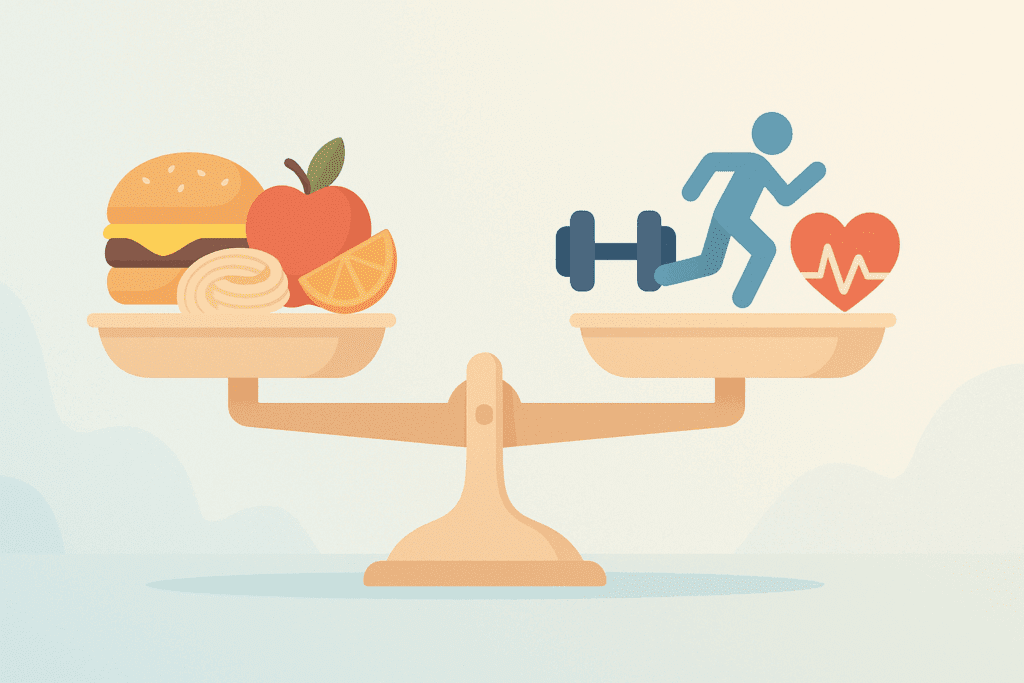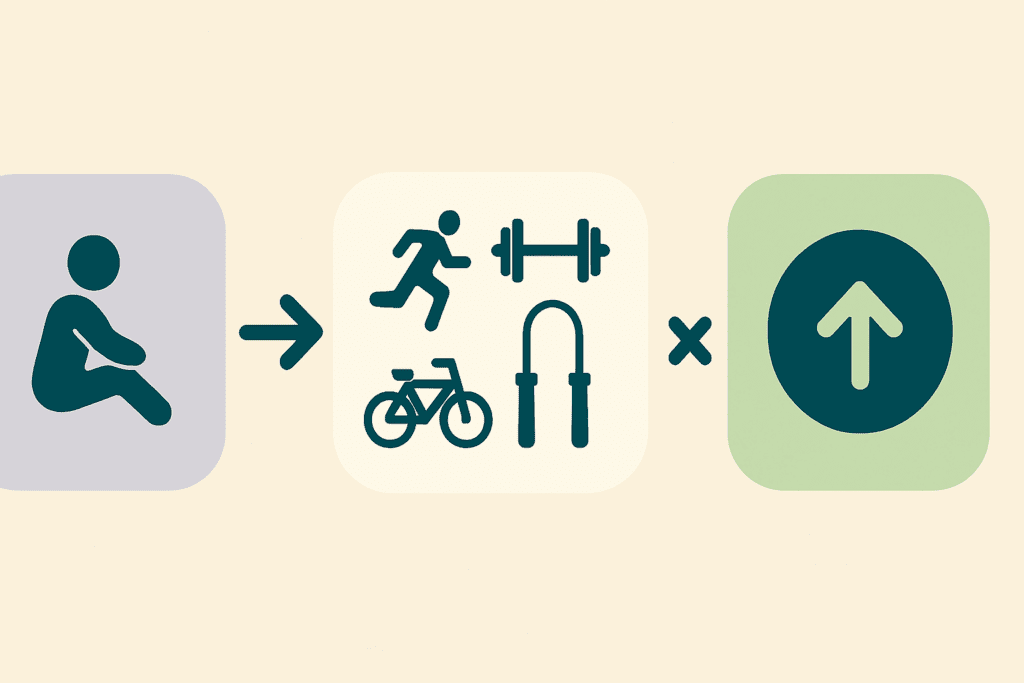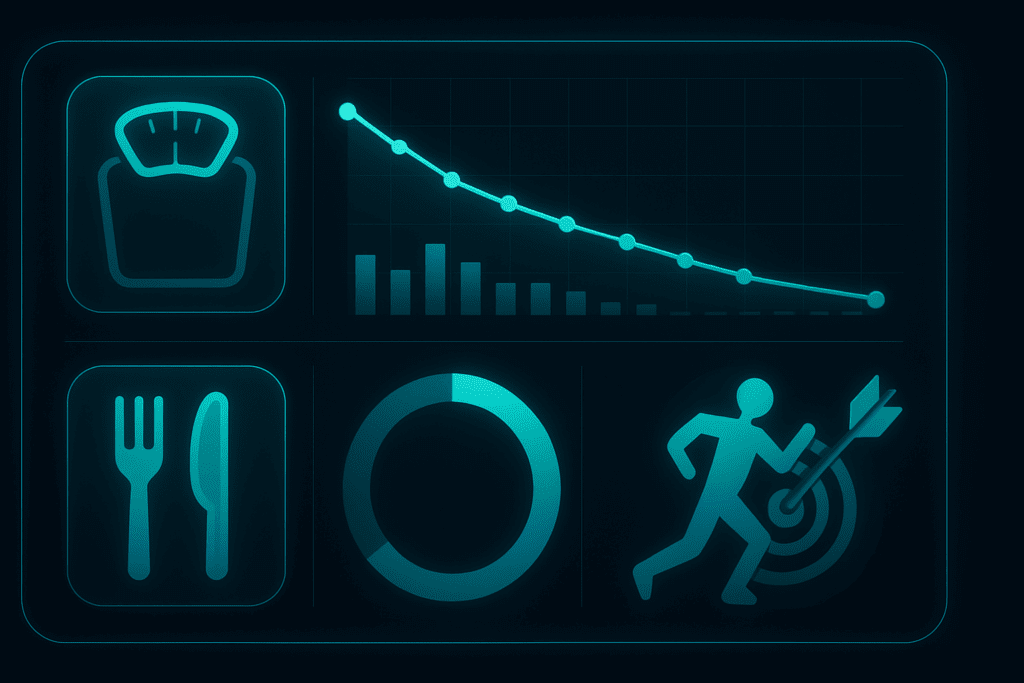Understanding your calorie needs is at the heart of effective and sustainable weight loss. While many people approach dieting with broad estimations, the truth is that personalized precision makes all the difference. A well-informed strategy begins not with a fad diet or restrictive plan, but with a deeper comprehension of your body’s unique caloric requirements. Whether you are new to the idea of calorie tracking or you have experimented with it in the past, learning how to use a weight loss calculator correctly can be the turning point in your journey toward better health. This expert guide will walk you through the science, tools, and nuanced approaches needed to accurately assess and adjust your daily caloric intake, so you can lose weight safely and effectively.
You may also like: Expert-Backed Weight Loss Tips for a Healthier Lifestyle: What You Need to Know for Long-Term Weight Control and Wellness

Calorie Balance: The Foundation of Weight Loss
Weight management is fundamentally governed by the concept of energy balance. Simply put, weight gain occurs when you consume more calories than your body needs, while weight loss happens when you consume fewer. This relationship between calorie intake and expenditure underscores the importance of understanding exactly how many calories you burn and how many you should be eating daily. A weight loss calculator helps quantify this balance, taking into account individual factors such as age, weight, height, gender, and activity level. Instead of guessing, it gives you a clear starting point.
The idea of “how many calories should I eat a day” isn’t one-size-fits-all. Two people of the same weight might require vastly different caloric intakes based on their metabolic rate and lifestyle. That’s why relying on tools like a calorie requirement calculator is essential. These tools help contextualize your daily needs, helping you avoid common pitfalls like under-eating, which can lead to muscle loss and nutritional deficiencies, or overeating, which may stall your weight loss efforts.

How to Calculate Maintenance Calories Accurately
To begin any effective weight loss plan, you must first know your maintenance calories—the amount of energy your body needs to maintain its current weight. This can be calculated through various formulas such as the Mifflin-St Jeor Equation or the Harris-Benedict Equation. These formulas factor in your Basal Metabolic Rate (BMR) and multiply it by your activity level to yield a total daily energy expenditure (TDEE). Knowing how to calculate maintenance calories accurately can make the difference between frustration and success.
Whether you’re wondering how to figure out maintenance calories or trying to understand how to determine maintenance calories based on your routine, the accuracy of these inputs is critical. Small errors in estimating physical activity or current weight can lead to substantial caloric miscalculations. That’s why many experts recommend double-checking your maintenance estimate with a validated weight loss estimator or weight reduction calculator to refine your plan and keep expectations realistic.
Using a Weight Loss Calculator for Personalized Planning
Once you’ve established your maintenance calorie level, the next step is to determine a caloric deficit that aligns with your weight loss goals. This is where tools like the best weight loss calculator come into play. These calculators typically allow you to input your current weight, target weight, timeframe, and activity level to generate a customized caloric goal. For those wondering how many calories should I eat to lose weight, such calculators offer evidence-based answers tailored to individual needs.
An effective kcal weight loss calculator not only estimates how much energy you should consume daily to lose weight but also projects potential outcomes. It can provide insight into questions like “how much weight will I lose calculator” or even offer a timeline with a lose weight time calculator. When used correctly, these tools are more than calculators—they become integral planning instruments that help you visualize your path forward and monitor your progress over time.

Factors That Influence Daily Calorie Needs
When asking, “how many calories should I eat a day,” it’s essential to understand the factors that influence your energy needs. Age, for instance, plays a critical role; your metabolic rate naturally declines over time, meaning fewer calories are required to maintain the same body weight. That’s why it is important to assess how many calories should I eat a day by age to match your current stage of life.
Activity level is another vital determinant. A sedentary person and an athlete will have very different caloric requirements, even if their body weights are similar. For those engaging in regular physical activity, an exercise weight loss calculator can provide more accurate projections of energy expenditure and necessary intake. Genetic predispositions, body composition, hormone levels, and even sleep quality also contribute to your overall metabolic rate, subtly influencing how many calories you should eat each day.

Determining the Right Caloric Deficit for Safe Weight Loss
Safe weight loss isn’t just about eating less—it’s about eating smart. Creating a caloric deficit of 500 to 1,000 calories per day is generally recommended to lose about one to two pounds per week. This rate is considered sustainable and less likely to trigger adverse effects such as muscle loss or metabolic slowdown. A healthy calorie intake for a cut should still support your nutritional needs, particularly for essential vitamins, minerals, and macronutrients like protein.
If you’re asking, “how much calories should I eat to lose weight,” using tools like a lose 1 lb a week calculator can provide an actionable target that aligns with your goal. This approach ensures that you remain in a moderate deficit rather than an extreme one. Overly aggressive calorie cuts often backfire, leading to binge eating or rapid weight regain. Instead, gradual reductions combined with increased activity offer the most sustainable path.

Tracking Progress with a Weight Loss Goal Calculator
Setting a target weight is a common first step, but understanding how to reach it safely requires a more refined strategy. A weight loss goal calculator allows you to translate your weight loss aspirations into measurable milestones. These calculators typically take into account your current weight, target weight, activity level, and timeframe, helping you design a roadmap that is both ambitious and realistic.
In addition to providing targets, tools like the when will I reach my goal weight calculator help you set expectations for your weight loss journey. They allow you to see how long it might take to achieve your desired results given your current habits and planned changes. By monitoring these benchmarks, you can adjust your caloric intake, tweak your exercise routine, or reassess your goals as needed.
Incorporating Physical Activity for Enhanced Caloric Burn
Exercise plays a pivotal role in weight loss not only by increasing energy expenditure but also by improving metabolic health. Utilizing an exercise weight loss calculator can help you understand how much additional calorie burn you can expect from various types of physical activity. Whether you’re engaging in cardio, strength training, or high-intensity interval training (HIIT), knowing the estimated burn per session allows for smarter planning.
When used alongside dietary tracking, exercise estimates can refine your overall energy equation. For example, you may find that after a 60-minute brisk walk, you can afford to eat a slightly larger dinner without disrupting your caloric deficit. This level of customization helps ensure you maintain energy levels, reduce cravings, and improve adherence to your plan. The best weight loss calculator tools integrate both dietary and exercise data for a comprehensive approach.
Personalizing Your Plan Using Demographic and Lifestyle Data
Beyond activity and age, other demographic factors like gender, height, and body composition significantly impact your caloric needs. For example, men generally have higher muscle mass and therefore higher caloric requirements than women of the same weight. Understanding how to find maintenance calories based on such personalized attributes is essential when aiming for precision.
People often ask, “how many calories does it take to maintain 347 pounds?” While the number may vary based on lifestyle and genetics, calculators that incorporate personalized metrics offer much more accuracy than general guidelines. Moreover, tools like the weight loss predictor and weight loss time calculator offer enhanced features that factor in anticipated changes in metabolic rate as you lose weight, adjusting your plan dynamically over time.
Avoiding Common Mistakes with Caloric Calculations
Despite the best intentions, many individuals fall into common traps when trying to determine their caloric needs. Underestimating portion sizes is one frequent issue, which leads to unintentional overconsumption. Overestimating physical activity is another, particularly if you assume that short bursts of movement equate to significant calorie burn. That’s why learning how to calculate maintenance calories with reliable tools is crucial.
Another common mistake involves misunderstanding “how do you determine caloric intake” in the context of lifestyle changes. For instance, someone who has recently started exercising might increase their food intake too dramatically, erasing the intended deficit. Using a well-calibrated weight goal calculator or calorie requirement calculator ensures that your adjustments are grounded in data rather than assumptions.

Using a Weight Loss Estimator to Project Outcomes
A major psychological benefit of using a weight loss estimator is the ability to visualize future success. These estimators can show projected weight changes over time, helping you stay motivated and committed. They answer key questions like “how much weight can I lose calculator” or “how long to lose weight calculator,” allowing you to see the big picture.
By integrating your maintenance calories, caloric deficit, and physical activity, these tools provide highly personalized forecasts. They also adapt over time, which is vital since your metabolic needs will shift as you lose weight. Whether you’re using a weight loss time calculator or a kcal weight loss calculator, these digital guides allow you to stay proactive rather than reactive in your weight loss strategy.
The Role of Realistic Expectations in Sustained Success
Perhaps one of the most underappreciated aspects of successful weight loss is setting realistic, evidence-based expectations. Tools like the weight loss goal calculator and the weight loss predictor help users understand what can reasonably be achieved within a given timeframe. Asking “to lose weight how many calories should I consume” is only part of the equation; understanding how your body will respond is equally important.
Your metabolism is not static. As you lose weight, your body becomes more efficient and your caloric needs may decrease. Regular recalibration using tools like a weight reduction calculator ensures that your approach evolves with your progress. This adaptive strategy is particularly important for those hitting plateaus or experiencing diminishing returns from the same routine.
Sustaining Weight Loss Through Ongoing Adjustment
Long-term success in weight management requires continual assessment and adjustment. Once you reach your goal, your focus shifts from deficit to maintenance. Knowing how to calculate maintenance calories anew is critical to prevent rebound weight gain. At this stage, tools like the calorie requirement calculator become just as important for weight maintenance as they were for weight loss.
Monitoring your weight and energy levels, adjusting food intake, and maintaining consistent physical activity form the foundation of long-term success. Having learned how to determine maintenance calories using evidence-based methods, you are better prepared to avoid common pitfalls such as overindulging post-goal or becoming too lax with portion control. Regular check-ins using the best weight loss calculator or a maintenance-oriented tool will help sustain your progress and reinforce healthy habits.
How to Interpret Results from Different Calculators
One of the complexities of using online tools is that different calculators may yield slightly different results. This variation often stems from the use of different equations, rounding, or input assumptions. When comparing your results from a kcal weight loss calculator and an exercise weight loss calculator, it’s important to understand their methodologies and data sources.
Instead of getting discouraged by small discrepancies, focus on trends and consistency. Use one trusted calculator—preferably the best weight loss calculator that integrates dietary, exercise, and biometric data—and stick with it. This helps ensure uniformity and makes it easier to identify what is and isn’t working. Also, keep in mind that these tools offer estimates, not guarantees. Their value lies in guiding your behavior with a data-backed framework, not delivering exact predictions.
Frequently Asked Questions: Calorie Calculation and Personalized Weight Loss Planning
1. Can a weight loss calculator predict hormonal changes or plateaus during long-term dieting?
A weight loss calculator offers an excellent baseline for tracking caloric intake and projected progress, but it doesn’t account for hormonal adaptations that occur during prolonged calorie restriction. Hormones like leptin, ghrelin, and thyroid hormones shift over time in response to sustained caloric deficits, often causing metabolic slowdowns or weight plateaus. While calculators such as a weight loss predictor or weight loss time calculator are useful, they typically operate under static assumptions and don’t reflect these physiological adaptations. This is why even when users follow guidance from a kcal weight loss calculator or a weight reduction calculator precisely, results can vary. Monitoring physical signs like energy levels, sleep quality, and hunger cues can help detect these shifts earlier and guide necessary recalibrations.
2. How many calories should I eat a day if I have a high-stress job with inconsistent sleep?
Stress and sleep disruption can significantly impact your metabolism and appetite regulation, meaning that even accurate answers to “how many calories should I eat a day” may require further refinement. Chronic stress elevates cortisol, which can cause the body to retain fat, especially around the abdomen, while also influencing cravings and emotional eating. In such cases, using a calorie requirement calculator should be paired with strategies that include sleep hygiene and stress management. If you’re relying on a weight loss goal calculator, consider adjusting your expectations and incorporating non-scale victories as benchmarks. When determining how to calculate maintenance calories in high-stress contexts, it’s essential to observe how your body reacts to consistent food patterns more than theoretical outputs.
3. What if I don’t know my exact body fat percentage—can I still use a weight goal calculator accurately?
Absolutely, most versions of a weight goal calculator or weight loss estimator do not require body fat percentage as a primary input. These tools rely more heavily on weight, age, gender, height, and activity level to guide recommendations. However, if you aim for advanced accuracy, consider using devices like bioelectrical impedance scales or consulting a professional who can assess lean mass vs. fat mass. Understanding how to find maintenance calories becomes easier when you recognize whether changes in weight come from fat loss or muscle loss. In contexts where precision matters—for instance, calculating a healthy calorie intake for a cut—having body composition metrics can refine how much calories you should eat to lose weight efficiently.
4. How do different calorie calculators compare, and which is the best weight loss calculator?
The best weight loss calculator for you depends on your goals, data availability, and how much customization you need. Basic tools may only answer how many calories should I eat or provide a rough kcal weight loss calculator output, while more advanced platforms integrate data from wearables and activity logs. Others offer features like how much weight will I lose calculator or lose 1 lb a week calculator projections, combining exercise and dietary inputs. When comparing options, prioritize calculators that align with your daily habits and allow you to update metrics over time. Tools that offer integration with food-tracking apps and allow you to adjust macros often serve as the most dynamic solutions for those wondering how to figure out maintenance calories in real time.
5. Can I rely on an exercise weight loss calculator if I do non-traditional workouts like yoga or gardening?
Many people mistakenly believe that only high-intensity workouts count toward energy expenditure, but an exercise weight loss calculator can indeed accommodate non-traditional movements if configured correctly. Activities such as yoga, walking your dog, or gardening all burn calories, though at a lower rate than cardio or resistance training. To accurately use a weight loss time calculator or weight loss predictor that factors in exercise, you may need to input the activity duration and perceived intensity. Not all calculators recognize the full impact of these gentler forms of movement, so when evaluating how to determine maintenance calories, consider cross-referencing with wearable fitness trackers. These methods offer more dynamic estimations than static inputs, especially for users who blend structured and spontaneous activities.
6. How many calories does it take to maintain 347 pounds, and what are the challenges in estimating for higher body weights?
Determining how many calories it takes to maintain 347 pounds requires more than plugging a number into a generic calculator. While a weight loss calculator or calorie requirement calculator will provide a ballpark figure—often between 2,800 to 3,800 daily calories depending on activity level—individual metabolic differences grow with increasing weight. The challenge lies in the fact that most formulas were developed using data from average-weight individuals. Consequently, when using tools like the best weight loss calculator or weight loss estimator, higher body weights may require customized medical assessments. Consulting a registered dietitian or medical professional can offer added clarity, especially when establishing how to figure out maintenance calories with a high BMI.
7. How do I adjust my calories as I age, and is there a preferred method for how many calories should I eat a day by age?
Aging naturally reduces metabolic rate due to declining muscle mass and hormonal shifts. Therefore, understanding how many calories should I eat a day by age is crucial for long-term weight maintenance and fat loss. Caloric needs drop by approximately 1-2% per decade after age 30, though staying physically active can slow this decline. A weight loss calculator tailored for older adults or a weight goal calculator that considers life-stage data can refine your nutritional targets. You may also want to increase your protein intake slightly while reducing empty carbs, especially if your use of a weight reduction calculator shows slower results with age.
8. What psychological benefits come from using a weight loss predictor or weight loss goal calculator regularly?
Engaging regularly with a weight loss predictor or weight loss goal calculator has psychological advantages that go beyond caloric control. These tools help users stay anchored in measurable progress, which can be especially helpful when weight loss feels slow or invisible. They also support a sense of autonomy and personalization, empowering users to make data-backed adjustments. Using calculators to determine how much weight can I lose or how long to lose weight calculator estimates offers validation for your daily choices. Moreover, they reduce anxiety by framing weight loss as a logical process rather than an emotional struggle.
9. How do you determine caloric intake for someone recovering from weight cycling or yo-yo dieting?
For individuals recovering from weight cycling, learning how do you determine caloric intake requires a re-education process that prioritizes metabolic repair. Chronic dieting often suppresses BMR, so jumping into a steep caloric deficit again is rarely the answer. Instead, consider reverse dieting—slowly increasing your intake to find your actual maintenance level before attempting another cut. Tools like a weight loss estimator or how to calculate maintenance calories method can aid this process, but results must be interpreted cautiously. Use a calorie requirement calculator to set gentle goals that prevent further metabolic damage while reintroducing dietary consistency.
10. Can a weight loss calculator help someone who wants to gain muscle and lose fat at the same time?
While traditional calculators focus on fat loss, some advanced versions can help balance dual goals like muscle gain and fat reduction. These tools often allow macro-based customization, showing you not just how many calories should I eat to lose weight, but also what ratio of protein, carbs, and fats support body recomposition. A healthy calorie intake for a cut that prioritizes muscle retention will look different than a pure fat-loss plan. When determining how much calories should I eat to lose weight while building lean mass, choose calculators that include strength training inputs and recovery estimates. By pairing data from a kcal weight loss calculator with an exercise weight loss calculator, you can create a dynamic plan that targets both aesthetics and metabolic resilience.
Final Thoughts: Using a Calorie Requirement Calculator to Build a Healthier Future
Calculating your daily calorie needs is more than a mathematical exercise; it’s an act of self-awareness and empowerment. The question of “how many calories should I eat a day” is best answered not with guesswork but with data-driven tools like a weight loss calculator. By learning how to calculate maintenance calories and using tools such as a weight loss goal calculator or a weight loss time calculator, you create a plan rooted in realism, science, and sustainability.
These calculators help demystify the complexities of weight loss by offering clear answers to questions such as “how many calories should I eat a day by age” or “how much weight can I lose calculator.” When used wisely, they support healthier decision-making and provide accountability without the need for extreme diets or misinformation. Whether you’re just starting your journey or recalibrating after years of yo-yo dieting, tools like the calorie requirement calculator and exercise weight loss calculator can make all the difference.
Ultimately, the key to lasting success lies in personalization, adaptation, and consistency. Use a weight loss predictor to track progress, a weight goal calculator to stay focused, and a weight loss estimator to stay motivated. By grounding your efforts in accurate data and realistic expectations, you not only reach your goals but learn how to maintain them for a healthier, happier life.


